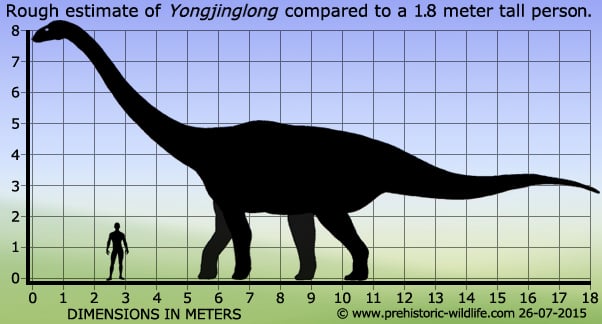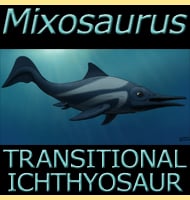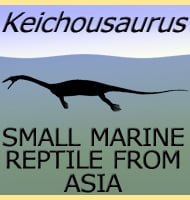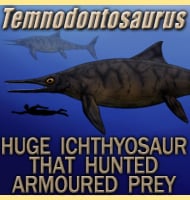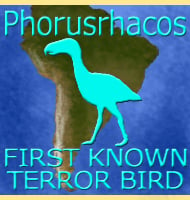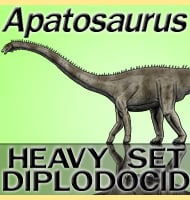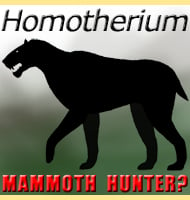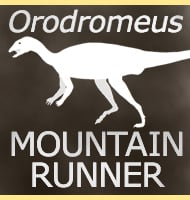In Depth
Perhaps the most unusual feature of Yongjinglong is the scapula, the part that is equivalent to your own shoulder blade. Although the holotype individual has been estimated to have been about fifteen to eighteen meters long, the shoulder blade was unusually large in proportion at two meters long in itself. In addition to the huge size, the scapula was also very straight and did not bow outwards like in other known titanosaurs. Assuming that this form is not a case of distortion while being preserved, this may indicate that Yongjinglong had an unusual body form in life.
Unfused portions of the shoulder blade have also revealed that the individual Yongjinglong described as the holotype was either a juvenile or subadult at the time of its death. This means that while the holotype individual is estimated at about fifteen to eighteen meters long, fully grown adults would have certainly been larger.
Yongjinglong was named after Yongjing County in Gansu Province, China due to the location of the holotype remains. The species name Y. datangi is in honour of the Tang dynasty as well as Mr. Zhi-Lu Tang for his work in the study of dinosaurs.
Further Reading
- A New Titanosaurian Sauropod from the Hekou Group (Lower Cretaceous) of the Lanzhou-Minhe Basin, Gansu Province, China - In Butler, Richard J. PLoS ONE 9: e85979 - Li-Guo Li, Da-Qing Li, Hai-Lu You & Peter Dodson - 2014.
